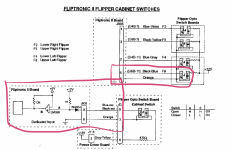I fixed this issue already but I wanted to turn the experience into a learning exercise and see if there is a better way of diagnosing these sorts of issue.
It was also an odd one, with the initial 2 symptoms appearing unconnected.
My solution had me checking for the wiring of the issue areas and looking at the manual and schematics to work out what to test before landing on the one part most likely to have failed.
I want to hear what others would have done to troubleshoot and narrow it down, consider it a challenge or puzzle. But there are no points if there you don't show your workings or logic and no guess work.
The starting information:
I only used the following documents:
Questions:
What board needed repair?
What component?
How did that failure cause the two separate symptoms?
It was also an odd one, with the initial 2 symptoms appearing unconnected.
My solution had me checking for the wiring of the issue areas and looking at the manual and schematics to work out what to test before landing on the one part most likely to have failed.
I want to hear what others would have done to troubleshoot and narrow it down, consider it a challenge or puzzle. But there are no points if there you don't show your workings or logic and no guess work.
The starting information:
- Machine is CFTBL
- Issue presented as:
- Left flipper fully pressed powered two flashers on the backbox on the orange-grey wire
- Switch error for F8, upper left flipper upper, black-blue
I only used the following documents:
Questions:
What board needed repair?
What component?
How did that failure cause the two separate symptoms?


